NASA To Study Launching Astronauts on 1st SLS/Orion Flight
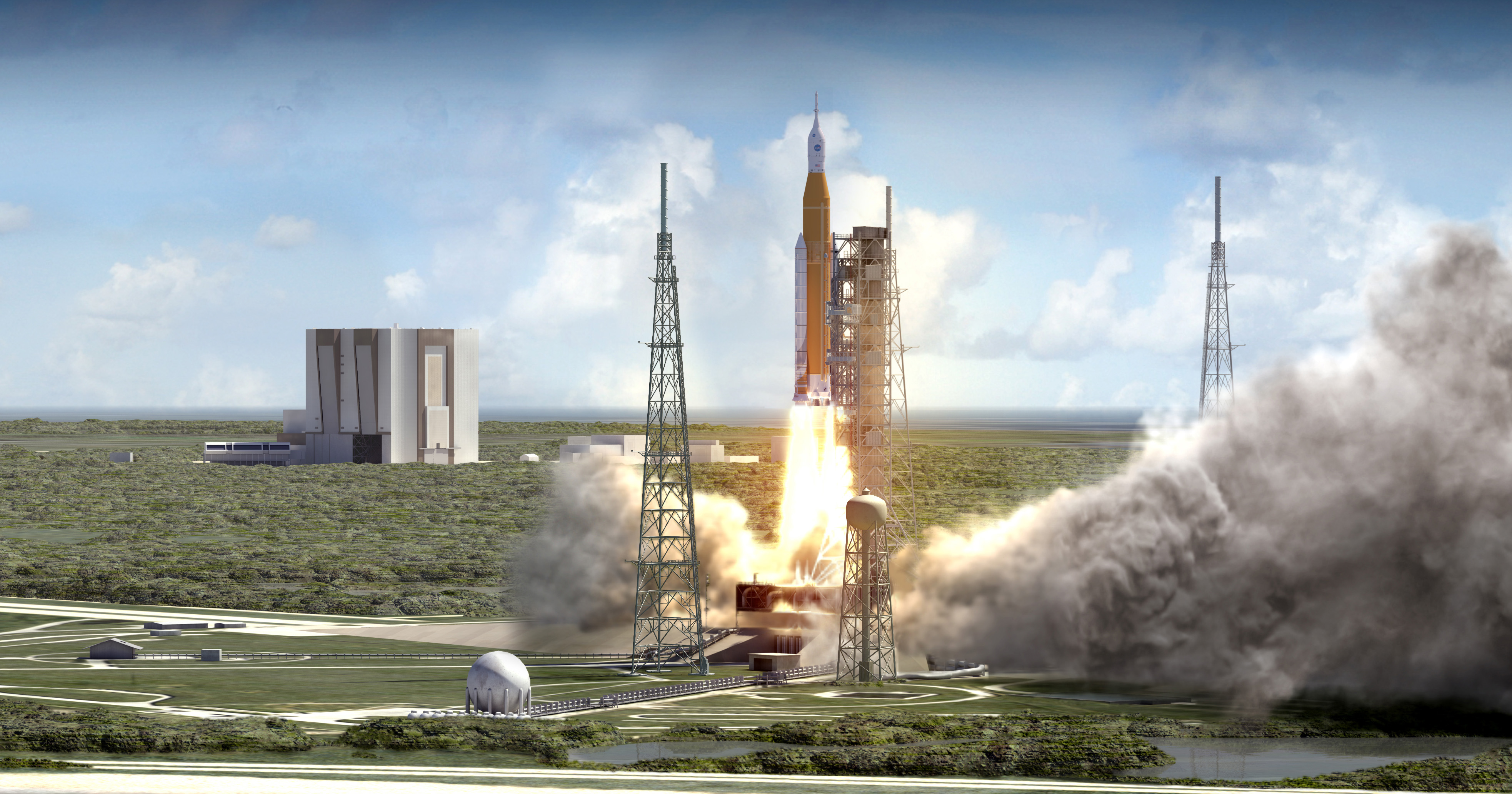

NASA’s Space Launch System (SLS) blasts off from launch pad 39B at the Kennedy Space Center in this artist rendering showing a view of the liftoff of the Block 1 70-metric-ton (77-ton) crew vehicle configuration. Credit: NASA/MSFC
KENNEDY SPACE CENTER, FL – In a potentially major change in direction for NASA’s human spaceflight architecture, the agency is officially studying the possibility of adding a crew of astronauts to the first flight of Orion deep space crew capsule and the heavy lift Space Launch System (SLS) rocket currently in development, announced Acting NASA Administrator Robert Lightfoot.
Lightfoot made the announcement in a speech to the Space Launch System/Orion Suppliers Conference in Washington, D.C. as well as an agency wide memo circulated to NASA employees on Wednesday, Feb. 15.
The move, if implemented, for the first joint SLS/Orion flight on Exploration Mission-1 (EM-1) would advance the date for sending American astronauts back to the Moon by several years – from the next decade into this decade.
Lightfoot has directed Bill Gerstenmaier, associate administrator for the Human Exploration and Operations Mission Directorate, to start detailed studies of what it would take to host astronauts inside the Orion EM-1 crew capsule.
“I have asked Bill Gerstenmaier to initiate a study to assess the feasibility of adding a crew to Exploration Mission-1, the first integrated flight of SLS and Orion,” Lightfoot said.
NASA’s current plans call for the unmanned blastoff of Orion EM-1 on the SLS-1 rocket later next year on the first test flight – roughly in the September to November timeframe from Launch Complex 39A at the Kennedy Space Center.
“The study will examine the opportunities it could present to accelerate the effort of the first crewed flight and what it would take to accomplish that first step of pushing humans farther into space,” NASA officials added in a statement.
But because of all the extra work required to upgrade a host of systems for both Orion and SLS for humans ahead of schedule, liftoff of that inaugural mission would have to slip by at least a year or more.
“I know the challenges associated with such a proposition, like reviewing the technical feasibility, additional resources needed, and clearly the extra work would require a different launch date” Lighfoot elaborated.
“That said, I also want to hear about the opportunities it could present to accelerate the effort of the first crewed flight and what it would take to accomplish that first step of pushing humans farther into space.”

Orion crew module pressure vessel for NASA’s Exploration Mission-1 (EM-1) is unveiled for the first time on Feb. 3, 2016 after arrival at the agency’s Kennedy Space Center (KSC) in Florida. It is secured for processing in a test stand called the birdcage in the high bay inside the Neil Armstrong Operations and Checkout (O&C) Building at KSC. Launch to the Moon is slated in 2018 atop the SLS rocket. Credit: Ken Kremer/kenkremer.com
The Orion EM-1 capsule is currently being manufactured at the Kennedy Space Center.
Components of the SLS-1 rocket are being manufactured at NASA’s Michoud Assembly Facility and elsewhere arounf the country by numerous suppliers.
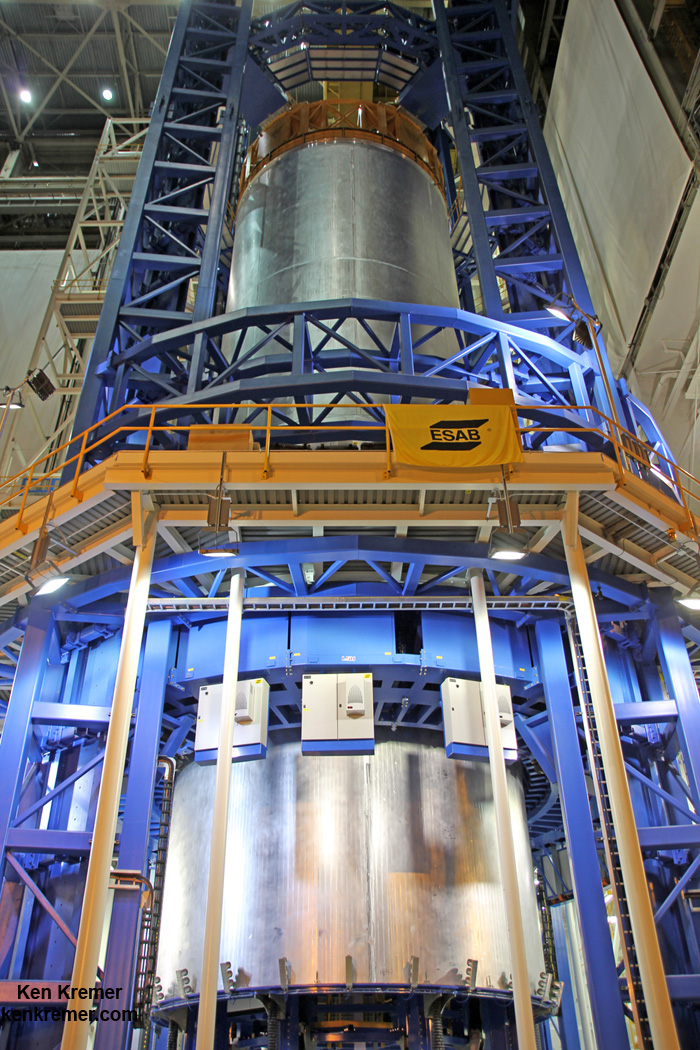
Welding is nearly complete on the liquid hydrogen tank will provide the fuel for the first flight of NASA’s new rocket, the Space Launch System, with the Orion spacecraft in 2018. The tank has now has now completed welding on the Vertical Assembly Center at NASA’s Michoud Assembly Facility in New Orleans. Credit: Ken Kremer/kenkremer.com
The 2018 launch of NASA’s Orion on the unpiloted EM-1 mission counts as the first joint flight of SLS and Orion, and the first flight of a human rated spacecraft to deep space since the Apollo Moon landing era ended more than 4 decades ago.
Now if might actually include humans.
Details to follow.
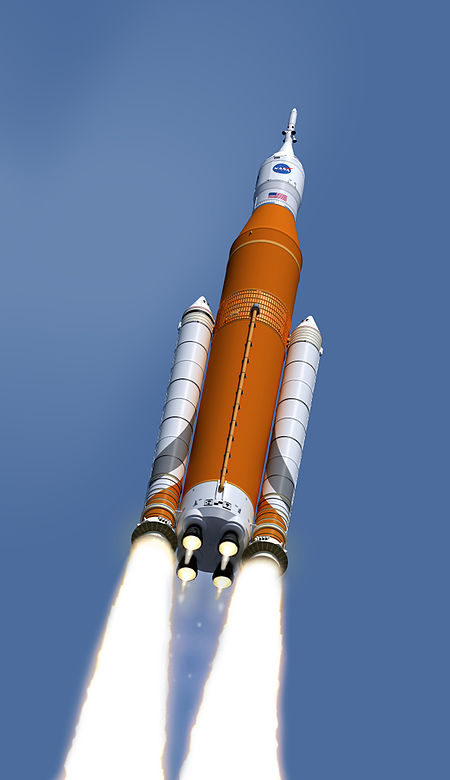
An artist’s interpretation of NASA’s Space Launch System Block 1 configuration with an Orion vehicle. Image: NASA
Orion is designed to send astronauts deeper into space than ever before, including missions to the Moon, asteroids and the Red Planet.
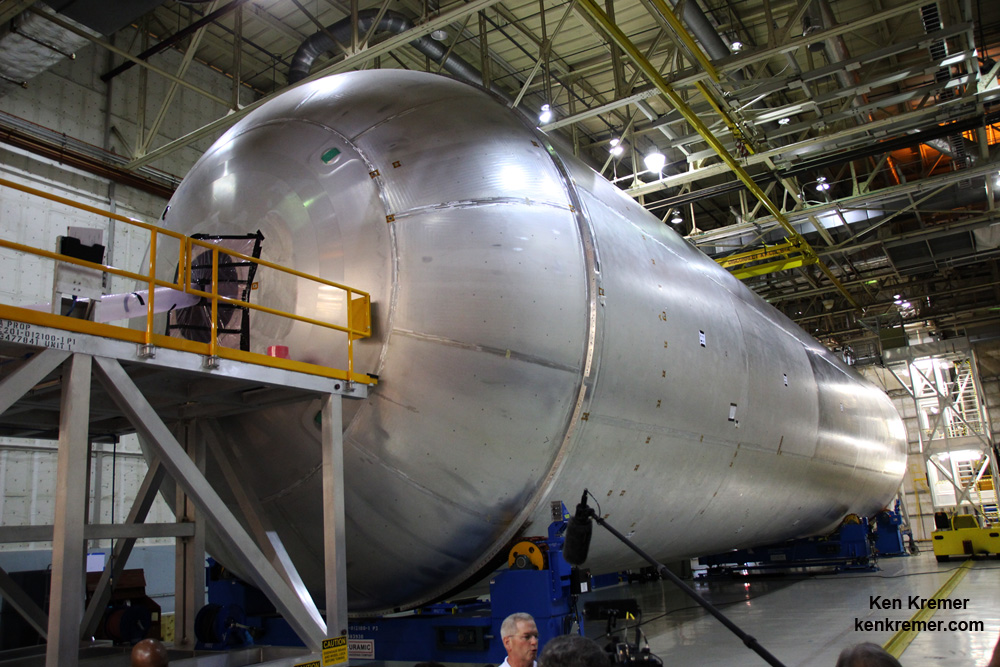
The liquid hydrogen tank qualification test article for NASA’s new Space Launch System (SLS) heavy lift rocket lies horizontally after final welding was completed at NASA’s Michoud Assembly Facility in New Orleans in July 2016. Credit: Ken Kremer/kenkremer.com
Stay tuned here for Ken’s continuing Earth and Planetary science and human spaceflight news.
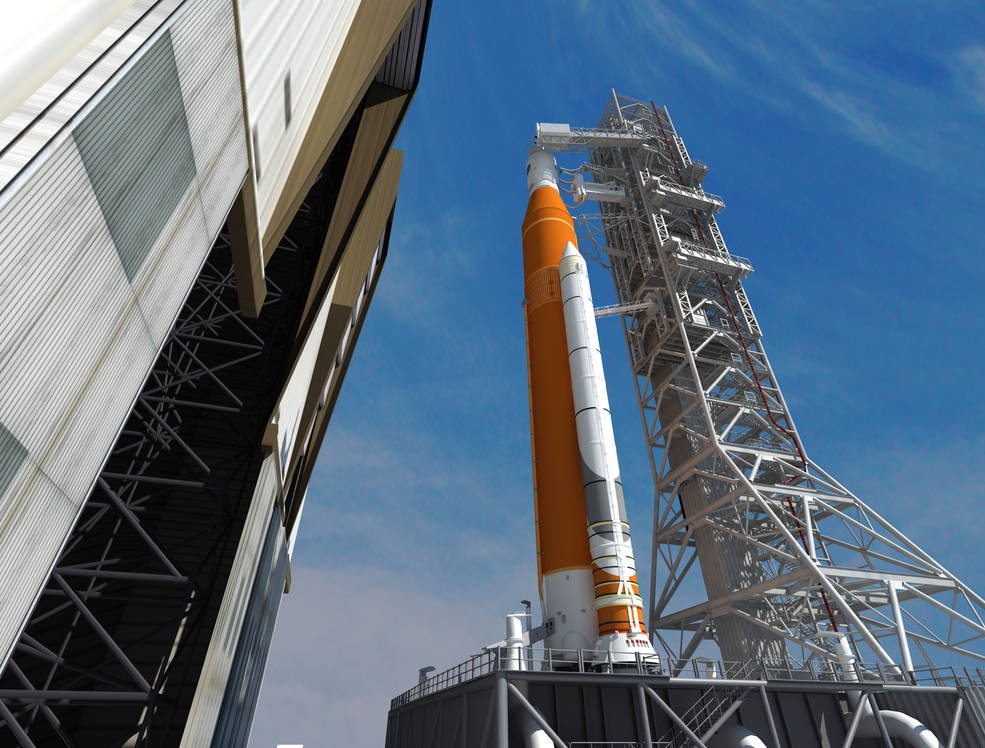
This artist concept depicts the Space Launch System rocket rolling out of the Vehicle Assembly Building at NASA’s Kennedy Space Center. SLS will be the most powerful rocket ever built and will launch the agency’s Orion spacecraft into a new era of exploration to destinations beyond low-Earth orbit. Credits: NASA/Marshall Space Flight Center
The post NASA To Study Launching Astronauts on 1st SLS/Orion Flight appeared first on Universe Today.
Universe Today
Go to Source
Powered by WPeMatico